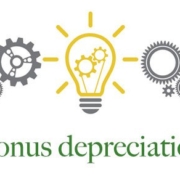Getting a Divorce? Learn How It Will Impact Your Taxes
- Learn your filing status options when separated but not yet divorced.
- Find out who can claim the children as dependents.
- Discover how child exemption rules have changed.
- Find out how to qualify as head-of-household.
- Learn who gets to claim the tuition tax credit.
- Discover the complexities of the child care tax credit.
- Find out who can claim the child tax credit.
- Learn more about the earned income tax credit.
- Discover the rules regarding alimony and how they’ve changed since 2018.
Recently divorced or are contemplating divorce? You will have to deal with or plan for significant tax issues such as asset division, alimony, and tax-return filing status. If you have children, additional issues include child support; claiming of the children as dependents; the child, child care, and education tax credits; and perhaps even the earned income tax credit (EITC). These are issues you will need to learn about quickly, so Fiducial has your guide to divorce and taxes below!
Filing Status
Your filing status is based on your marital status at the end of the year. If, on December 31, you are in the process of getting a divorce but not yet divorced, your options are to file jointly or to each submit a return as married filing separately.
There is an exception to this rule. If a couple has been separated for all of the last 6 months of the year, and if one taxpayer has paid more than half the cost of maintaining a household for a qualified child, then that spouse can use the more favorable head of household filing status. If each spouse meets the criteria for that exception, they can both file as heads of household; otherwise, the spouse who doesn’t qualify must file using the status of married filing separately. If you have finalized your divorce and if you haven’t remarried, your filing status will be single. If you meet the requirements, you may file as head of household.
Claiming the Children as Dependents
A common (and commonly misunderstood) issue for divorced or separated individuals who have children is the choice regarding who claims a child for tax purposes. This issue can cause disputes between parents. However, tax law includes very specific (albeit complicated) rules about who profits from child-related tax benefits. At issue? A number of benefits, including the child, child care, higher-education tuition, and earned income tax credits, as well as, in some cases, filing status.
This is actually one of the most complicated areas of tax law. Both taxpayers and inexperienced tax preparers can make serious mistakes when preparing returns. This is especially true if the parents do not communicate well. When parents cooperate with each other, they often work out the best tax result overall, even though it may not be the best for them individually. They can then compensate for discrepancies in other ways.
When a court awards physical custody of a child to one parent, the tax law is very specific in awarding that child’s dependency to the parent with physical custody. It is true regardless of the amount of child support that the other parent provides. However, the custodial parent may release the dependency to the noncustodial parent by completing the appropriate IRS form.
CAUTION
Do not take the decision to relinquish dependency lightly, as it impacts a number of tax benefits.
On the other hand, if a court awards joint physical custody of a child, only one parent can claim the child for tax purposes. If the parents cannot agree on who will claim the child, or if both actually claim the child, the IRS tiebreaker rules apply. Per these rules, the IRS treats a child as a dependent of the parent with whom the child resided for the greater number of nights during the tax year. If the child resides with both parents for the same amount of time, the parent with the higher adjusted gross income claims the child as a dependent.
These rules take precedence over what a court may intend. For example, say the judge in Tom and Becky’s divorce proceeding rules that Tom, who must pay a specified amount of child support monthly, is to claim their child as a dependent on his tax return. But the child lives with Becky more nights during the year than with Tom. Under the tax law, Becky can claim the child as her dependent, regardless of what the court-approved divorce agreement says.
Child’s Exemption
Under prior law, a child’s tax-exemption deduction was generally an issue; the parent claiming the child as a dependent got a deduction for the exemption allowance amount. However, because of tax reform, the tax deduction for such exemptions has been suspended through 2025. Although this is no longer an issue for this benefit, a child’s dependency is still a consideration for other tax issues.
Head of Household Filing Status
An unmarried parent can claim the more favorable head of household (rather than single) filing status if that person (a) is the custodial parent and (b) pays more than one-half of the cost of maintaining the household that is the principal place of residence for the child (i.e., where the child lives for more than half of the year).

Tuition Credit
If the child qualifies for either of two higher-education tax credits (the American Opportunity Tax Credit [AOTC] or the Lifetime Learning Credit), the credit goes to whomever claims the child as a dependent.
Credits are significant tax benefits because they reduce the dollar-for-dollar tax bill. Deductions, on the other hand, reduce taxable income before calculating the tax amount according to the individual’s tax bracket. For instance, the AOTC provides a tax credit of up to $2,500, 40% of which is refundable. However, both education credits phase out for high-income taxpayers. Effective for years after 2020, both credits phase out between $80,000 and $90,000 for unmarried taxpayers and between $160,000 and $180,000 for married taxpayers.
Child Care Credit
A nonrefundable tax credit exists for the custodial parent to offset the cost of child care. However, the parent must be gainfully employed or seeking employment. To qualify for this credit, the child must be under the age of 13 and a dependent of the parent. However, there is a special rule for divorced or separated parents. When the custodial parent releases the child’s exemption to the noncustodial parent, the custodial parent still qualifies for the child care credit. The noncustodial parent cannot claim that credit.
The credit is a percentage of the expenses. It ranges from 35% for lower income taxpayers to 20% for the higher income ones. The expenses used to determine the credit are limited to $3,000 for one child and $6,000 for two or more. Note: President Biden’s American Rescue Plan includes a substantial one year (2021) increase in the credit.
Child Tax Credit
The IRS allows a credit of $2,000 for each child under the age of 17. This credit goes to the parent who claims the child as a dependent. Up to $1,400 of the credit is refundable if the credit exceeds the tax liability. However, this credit phases out for high-income parents. Phase-out begins at $200,000 for single parents and at $400,000 for married parents filing jointly. President Biden’s American Rescue Plan also includes a one-year increase to $3,000 ($3,600 for children under the age of 6).
Earned-Income Tax Credit
Low-income parents with earned income (either wages or self-employment income) may qualify for the EITC. The EITC is based on the number of children (all those under age 19, plus full-time students under age 24), up to a maximum of three children. Releasing dependency to the noncustodial parent does not disqualify the custodial parent from using children to qualify for the EITC. In fact, the noncustodial parent may not claim the EITC based on children whose dependency the custodial parent has released.
Divorce, Alimony, and Taxes
The tax reforms enacted in late 2017 also impact the tax treatment of alimony. For divorce agreements finalized before the end of 2018, the recipient (payee) of the alimony must include that income for tax purposes. The payer in such cases may deduct the payments above the line (without itemizing deductions). We refer to this as an adjustment to gross income.
The recipient who includes this alimony income can treat it as earned income for purposes of qualifying for an IRA contribution. This allows the recipient to contribute to an IRA even if he or she has no income from working.
Because some of those who make alimony payments will claim that they paid more than they actually did, and because some recipients will report less alimony income than they actually received, the IRS requires that the paying spouse’s tax return include the recipient spouse’s Social Security number so that the IRS can use a computer to match the amount received to the amount paid.
For divorce agreements finalized after 2018, alimony is not deductible by the payer and is not taxable income for the recipient. Because the recipient isn’t reporting alimony income, he or she cannot treat it as earned income for the purposes making an IRA contribution.
This revised treatment of alimony also applies to any divorce or separation instrument executed before the end of 2018 but modified after that date – if the modification expressly provides that the tax reform provisions apply.
What’s next?
As you can see, some complex rules apply to divorce situations. Please call your Fiducial representative if you have questions related to a pending divorce action. If Fiducial has been providing services to both parties in a pending divorce, there are some inherent conflicts of interest in providing advice or preparation services to both parties. We may be able to provide services to only one member of the former couple.
Call Fiducial at 1-866-FIDUCIAL or make an appointment at one of our office locations to discuss your situation.
Ready to book an appointment now? Click here. Know someone who might need our services? We love referrals!
For more small business COVID-19 resources, visit Fiducial’s Coronavirus Update Center to find information on SBA loans, tax updates, the Paycheck Protection Program, paid sick and family leave, and more.









